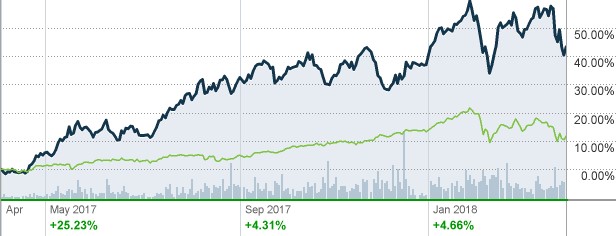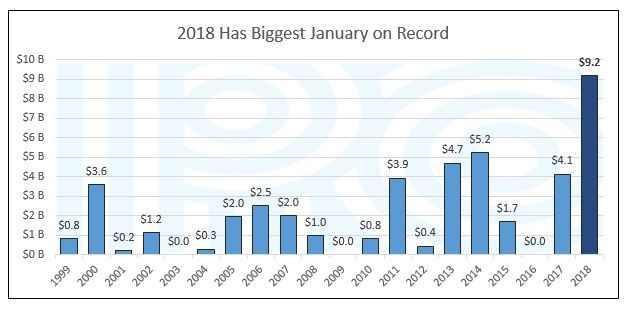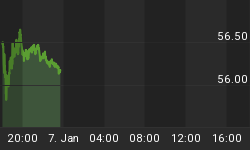After struggling for years, the U.S. initial public offering market finally appears to be hitting its stride, with a total of 43 IPOs fetching $15.6 billion in the first quarter—the most in three years, and nearly 60 percent more than the same period last year.
Even more remarkable is the fact that four of those were billion-dollar IPOs, more than the entire haul in 2017.
The first quarter is a historically slow period for IPOs, implying that the current run-rate is on course to exceed last year's tally of 181 companies.
The market has foreign players largely to thank for that, with half of the 10 largest listings being overseas companies.

(Click to enlarge)
Warming up to Chinese stocks
The technology sector bagged pole position with 40 percent of proceeds, more than twice as much as the healthcare sector despite the latter's 12 listings to tech's nine.
The market's ongoing tech lovefest seem not to have missed a beat, with technology IPOs racking up average returns of 26.7 percent vs. 12.6 percent for healthcare. Not surprisingly, the only three stocks in the out-of-favor industrial sector IPO’ed and were immediately hammered to the tune -28.6 percent.
Quite tellingly, 21 percent of Q1 proceeds were in Chinese deals.
China’s iQIYI Inc.(NASDAQ:IQ), a video-streaming platform a la Netflix (NASDAQ:NFLX), was the second-largest listing, raising $2.25 billion, behind only Brazil's PagSeguro Digital Ltd's (NYSE:PAGS) $2.3 billion. That's nearly the same haul as the $3.4 billion collectively raised by the 16 Chinese companies that listed in U.S. exchanges in 2017.
New York has for years been the favored home of China's new economy IPOs, and the trend will probably continue in the foreseeable future. That in part has to do with more easier and faster registrations by U.S. exchanges as opposed to strict and rigorous regulations in China. Many Chinese companies, especially unprofitable ones, do not make the cut to be listed on the Chinese A-Shares Market due to overly strict financial standards. Related: The American Dream Is Drowning In Debt
But the exemplary performance by U.S.-listed Chinese companies cannot be overlooked.
Although investing in many of these stocks has been a rollercoaster ride in the past, investors have increasingly been warming up to them as the U.S. market continues to overheat and valuations skyrocket. Popular Chinese ETFs including KWEB and GXI have easily outperformed the S&P 500 over the past 12 months.
KraneShares CSI China Internet ETF (KWEB) vs. S&P 500 Index(SPX) 12-month Change

(Click to enlarge)
Favorable regulation releases pent-up demand
January 2018 was a truly exceptional month, with three dollar-billion IPOs and a total of $9.2 billion proceeds realized. That's 4.5x more than the average for the month, demonstrating a clear pent-up demand for the IPO market.

(Click to enlarge)
Source: Nasdaq
A favorable SEC-rule change in mid-2017 allowed companies to pursue offerings with greater flexibility under a new tax structure. Many companies pushed back IPOs to allow them to take advantage of the favorable climate, thereby creating a build-up in supply.
The IPO market could end up seeing much more activity as more overseas companies continue to favor a U.S. listing.
The rumor mills have it that Chinese Uber Didi Chuxing, as well as giant smartphone-marker Xiaomi, could be angling for a U.S. listing over the next couple of years. Both companies are valued at nearly $50 billion apiece, and will easily dwarf Alibaba's (NYSE:BABA) $25-billion IPO in 2014.
President Trump has lately doubled-down on a deregulation drive, which could help make U.S. exchanges even more attractive to foreign companies and drive higher IPO volumes.
By Charles Benavidez for Safehaven.com
More Top Reads From Safehaven.com:
















